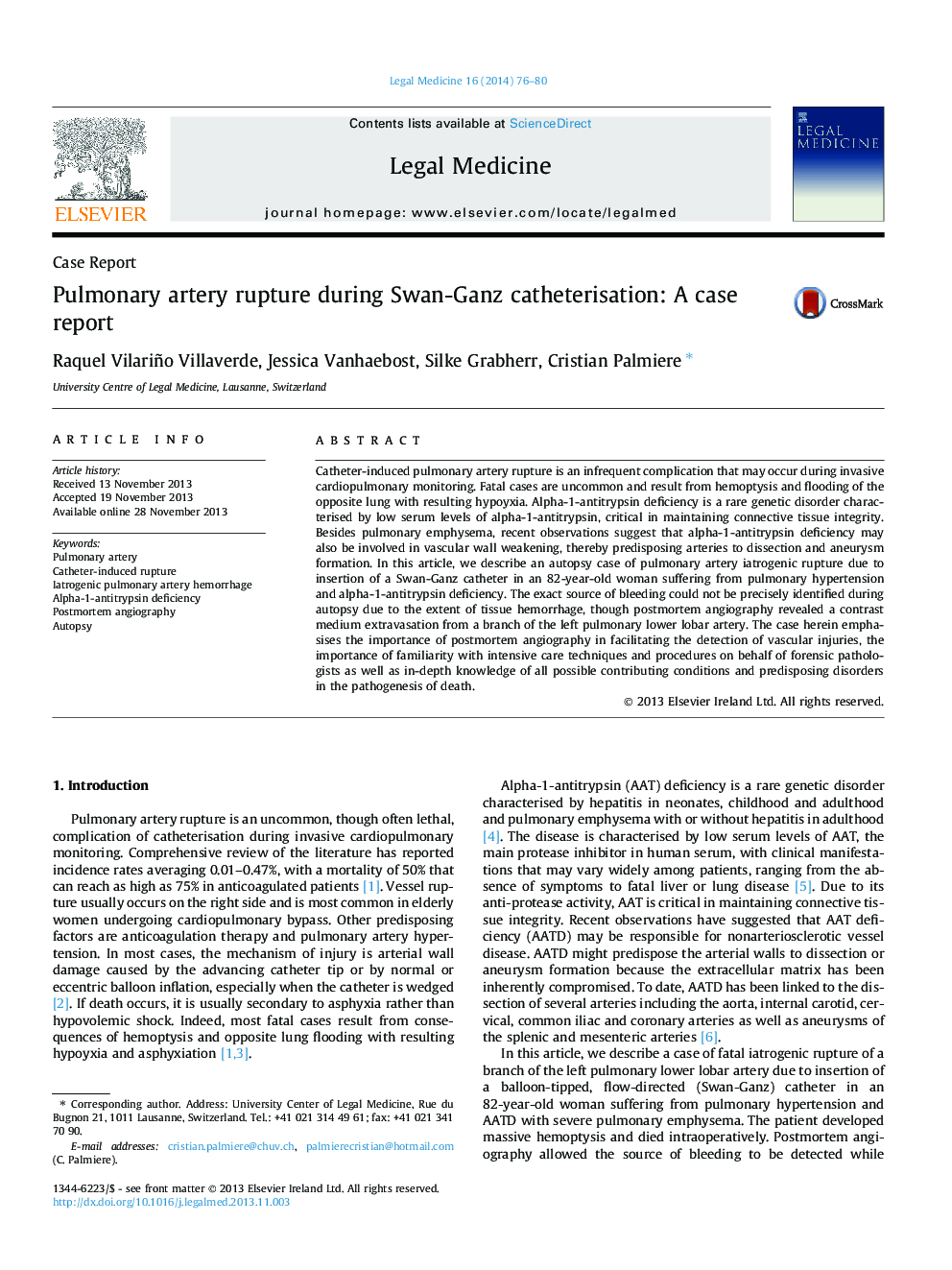| Article ID | Journal | Published Year | Pages | File Type |
|---|---|---|---|---|
| 103806 | Legal Medicine | 2014 | 5 Pages |
Catheter-induced pulmonary artery rupture is an infrequent complication that may occur during invasive cardiopulmonary monitoring. Fatal cases are uncommon and result from hemoptysis and flooding of the opposite lung with resulting hypoyxia. Alpha-1-antitrypsin deficiency is a rare genetic disorder characterised by low serum levels of alpha-1-antitrypsin, critical in maintaining connective tissue integrity. Besides pulmonary emphysema, recent observations suggest that alpha-1-antitrypsin deficiency may also be involved in vascular wall weakening, thereby predisposing arteries to dissection and aneurysm formation. In this article, we describe an autopsy case of pulmonary artery iatrogenic rupture due to insertion of a Swan-Ganz catheter in an 82-year-old woman suffering from pulmonary hypertension and alpha-1-antitrypsin deficiency. The exact source of bleeding could not be precisely identified during autopsy due to the extent of tissue hemorrhage, though postmortem angiography revealed a contrast medium extravasation from a branch of the left pulmonary lower lobar artery. The case herein emphasises the importance of postmortem angiography in facilitating the detection of vascular injuries, the importance of familiarity with intensive care techniques and procedures on behalf of forensic pathologists as well as in-depth knowledge of all possible contributing conditions and predisposing disorders in the pathogenesis of death.
